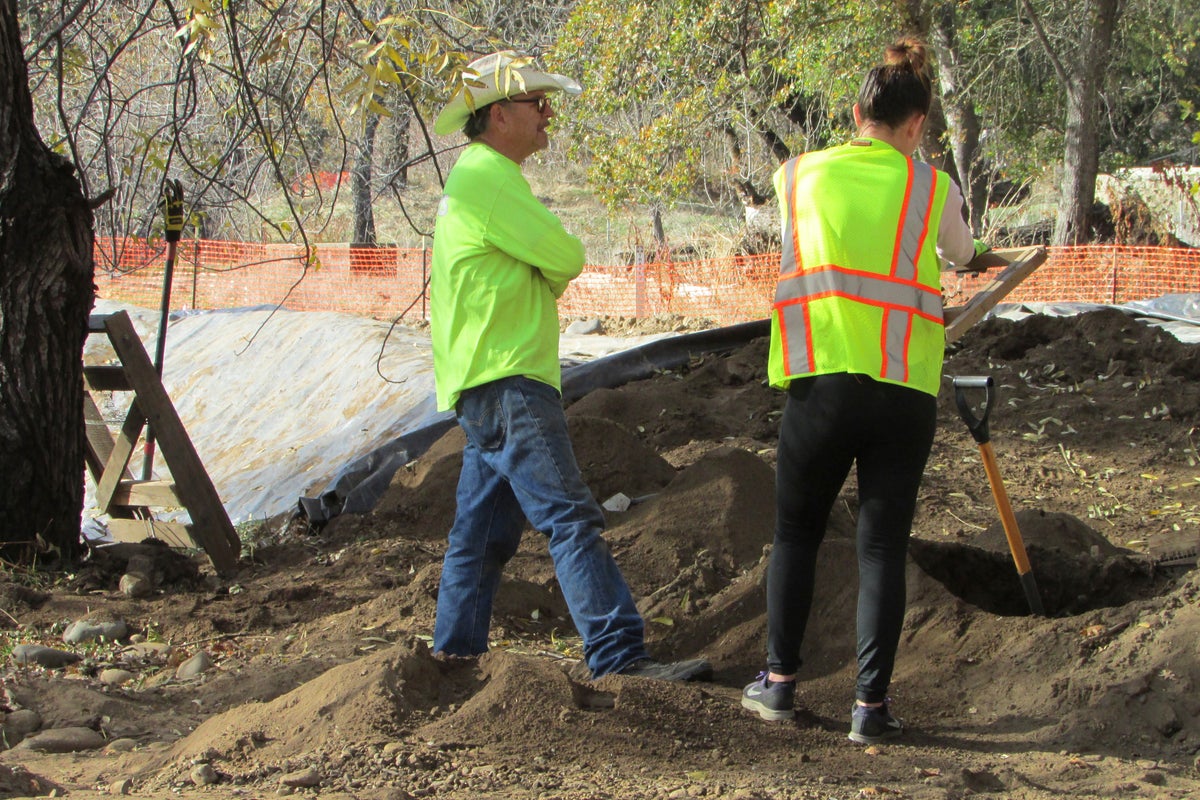
A Native American tribe in Northern California is racing toward a Friday deadline to conclude its search for human remains and cultural artifacts on what was once a tribal village site but will soon be home to a shared-use path and parking area.
Ancestors of the Wintu Tribe of Northern California were buried near the site, and tribal leaders said they didn’t receive proper notification about construction plans from the Federal Highway Administration, which is in charge of the project.
The construction, which began in July, will create a 3,900-foot (1,190-meter) path, a parking area and restroom facilities near Redding, a small California city about 120 miles (190 kilometers) south of the Oregon border. It will be located off Interstate 5, one of the state's major north-south roads, with the path running along the Sacramento River. The project is a partnership among the highway administration, Redding and the Bureau of Land Management.
The Federal Highway Administration shared with The Associated Press a copy of the 2019 letter it says it sent to tribal leaders. But officials with the tribe say they never received a copy of it, nor any follow-up, before construction began. Federal law requires tribal consultation, and state law requires a review of whether a project could affect tribal cultural resources before proceeding with the construction of trails, highways, streets and other public areas.
The dispute over whether the tribe was properly consulted comes as the Biden administration has pledged to make sure Native Americans have a stronger voice in decisions made by federal agencies.
“I made a commitment that my administration would prioritize and respect nation-to-nation relationships, and I’m going to make sure that happens,” President Joe Biden said at a recent White House Tribal Nations Summit.
The Wintu Tribe of Northern California was originally made up of nine bands that historically have the Penutian language family in common. Today, the tribe has about 450 citizens, said Secretary Cindy Hogue.
The tribe first became aware of the trail construction through Robert Garcia, a monitor and tribal citizen who was walking near the site one day in August, said his niece Shawna Garcia, a council member-elect for the tribe.
In late October, Art Garcia, the tribe's cultural resources manager, found a bone fragment in the soil, and the county coroner’s office was notified so an investigator could review whether it was human, the sheriff’s department said in a release. The remains were deemed too small to be identifiable, the department said.
The federal government agreed to grant Art Garcia and other monitors about 1,000 hours to sift through the site for remains and artifacts.
So far, the team has found arrowheads, mortars and pestles, among other items, Shawna Garcia said. There were originally 12 monitors searching for remains and artifacts, and there were nine as of Tuesday, she said.
She said it’s frustrating that the team is “still cleaning up a mess that” was a result of construction, referring to the sifting that remains to be done.
More possible remains have been found, and the coroner’s office has ruled them nonhuman animal remains or indeterminate fragments. Hailey Collord-Stalder, a county deputy coroner investigator, said she last reviewed possible remains in early November.
Gary Rickard, the tribe’s chair, said the lack of early communication between the Federal Highway Administration and the tribe is uncommon compared with other talks between the tribe and governmental agencies, he said. The government should have been able to tell the risk of disturbing remains, Rickard added.
“You don’t have to be an archaeologist to go out there and look and realize, oh, man, yeah, this is a village site,” he said. “And when you have a village, people pass away and they bury them.”
Construction halted in the area where the bone fragment was first found and temporarily at the end of the trail but was ongoing elsewhere, a highway administration spokesperson said.
The Federal Highway Administration's 2019 letter stated the tribe had 30 days to respond with information about cultural resources within the project site. The agency addressed it to former chair Wade McMasters, who had already left the job.
“Please inform us if your Tribe has a religious or cultural affiliation to resources that have been identified” in the project area, it reads. “Your knowledge of the area is of great value and your feedback is important.”
Before construction began, a federally qualified archaeologist surveyed the location where the project was being proposed, the agency spokesperson said. And in June 2020, the city of Redding signed a document indicating that the agency was exempt from portions of a state law that requires agencies to assess whether projects could threaten resources including those of cultural significance to tribes.
The document says the “project has no potential to have a significant effect on the environment.”
Even though the tribe isn’t federally recognized, agencies are still required by state and federal law to contact them before beginning construction on a project like this, since they are considered a stakeholder, said Mark Hylkema, an archaeologist for the Santa Cruz district of California State Parks.
Agencies should also make multiple attempts to contact tribes if they don't get a response, including making phone calls, he said.
“It’s good policy, and any agency knows that,” Hylkema said.
The Federal Highway Administration may give the tribe more time to search through the remains, but construction of the trail is expected to wrap later this month, the spokesperson said.
Despite their frustrations, Art Garcia said, his team won't stop searching with the time they have left.
“We’re not going to give up,” he said.







